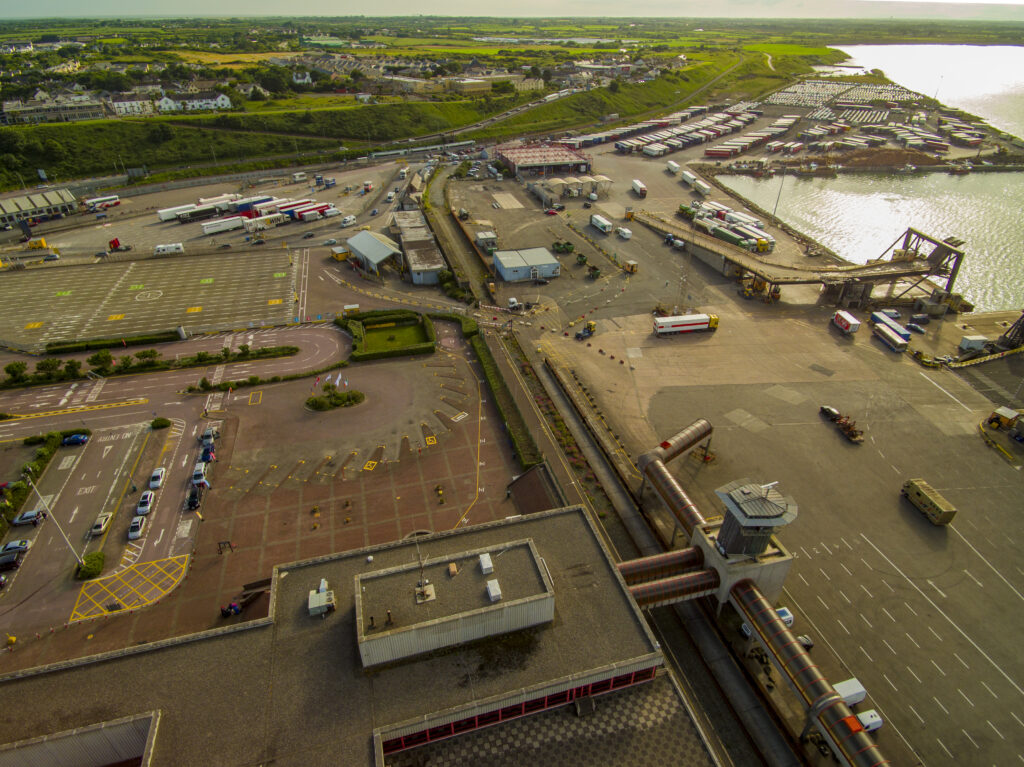In the first six months of 2023, the volumes handled by the Roll-on/Roll-off (RoRo) and Lift-on/Lift-off cargo modes at Irish ports declined significantly. When compared to the first half of 2022, RoRo volumes fell by 3%, equivalent to 20,000 fewer RoRo units. LoLo traffic fell by 9%, or 55,000 TEU’s, over the same period.
The predominant driver of these declines has been inflation, which has risen considerably both at home and abroad over the last 18 months. Beginning with a rapid rise in energy costs in early 2022, the cost of transporting goods, and the cost of goods themselves, has risen sharply. This has suppressed trade at our ports, with traffic on almost all routes declining to some degree. In this report, the IMDO analyses the performance of the unitised (i.e. RoRo and LoLo) freight markets throughout these tough economic conditions.
In the RoRo market, volumes in Q1 and Q2 declined by 4% and 3% respectively. Volumes in both quarters were below the long term trend for the sector, the benchmark for which is approximately 300,000 units per quarter. When seasonally adjusted, RoRo traffic declined on a quarterly basis in four of the last five quarters.
Rosslare-Europort was the only port to record an increase compared to 2022. This was driven by an announcement in late 2022 that a Cork-Zeebrugge service operated by Grimaldi would move to Rosslare Europort. Finnlines, a Finnish shipping company that is part of the Grimaldi Group, now operates the service from Rosslare.
The breakdown in RoRo traffic between ports in mainland Great Britain (ROI – GB) and ports in mainland Europe (ROI – EU) has now exhibited the same post-Brexit trends for ten consecutive quarters. ROI – EU, or direct, RoRo traffic continues to represent 1 in 3 RoRo units, compared to 1 in 6 prior to January 2021. As a result, there is no immediate sign of a return to the pre-Brexit makeup of the Irish RoRo freight market.
In the LoLo market, volumes in Q1 and Q2 declined by 7% and 11% respectively. The declines in LoLo traffic were also reflected at an international level. As described in Section 2, global seaborne trade indicators for container traffic exhibited sharp declines, particularly in the early months of 2023, a trend that was mirrored at Irish ports.
Overall, the volumes recorded in the unitised freight market at Irish ports in the first half of 2023 were sluggish, below trend, and reflective of the suppressive effect inflation has had on international trade volumes. However, there are several reasons to be optimistic about the near future for Irish maritime traffic. Firstly, inflation has begun to ease across the EU. In Ireland, the inflation rate in July was 4.6%, its lowest level since September 2021. Secondly, according to latest Central Bank reports, domestic growth in Ireland remains robust and is higher than what was expected earlier in the year. Unemployment is extremely low, and this is creating resilience within the economy. Abroad, EU growth is subdued, while US growth is improving. Both are also buoyed by high employment levels. Most importantly, global inflation rates are easing.
In all, there are positive signals that the declines recorded at Irish ports may be temporary, and that the worst period may have passed. As we have seen from the disruption caused by both Brexit and COVID-19 in recent years, there is a resilience in the Irish maritime freight market that is essential to overcoming economic headwinds such as these.

